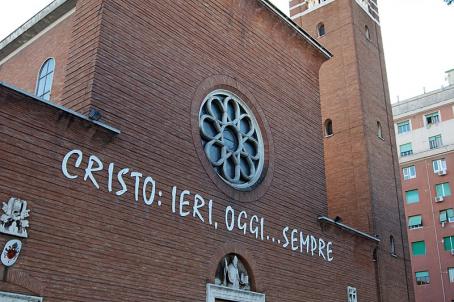Chiesa dei Santi Fabiano e Venanzio

The Church of Saints Fabiano and Venanzio was built in 1936 by the architect Clemente Busiri Vici. The interior consists of a nave and two aisles; the presbytery is crowned by a mosaic covering the entire wall, representing Christ blessing with Saints Fabian and Venantius. In the church premises, there are works from the former church of Saints Venantius and Ansovino, demolished in 1928 for the construction of the Piazza di San Marco.





